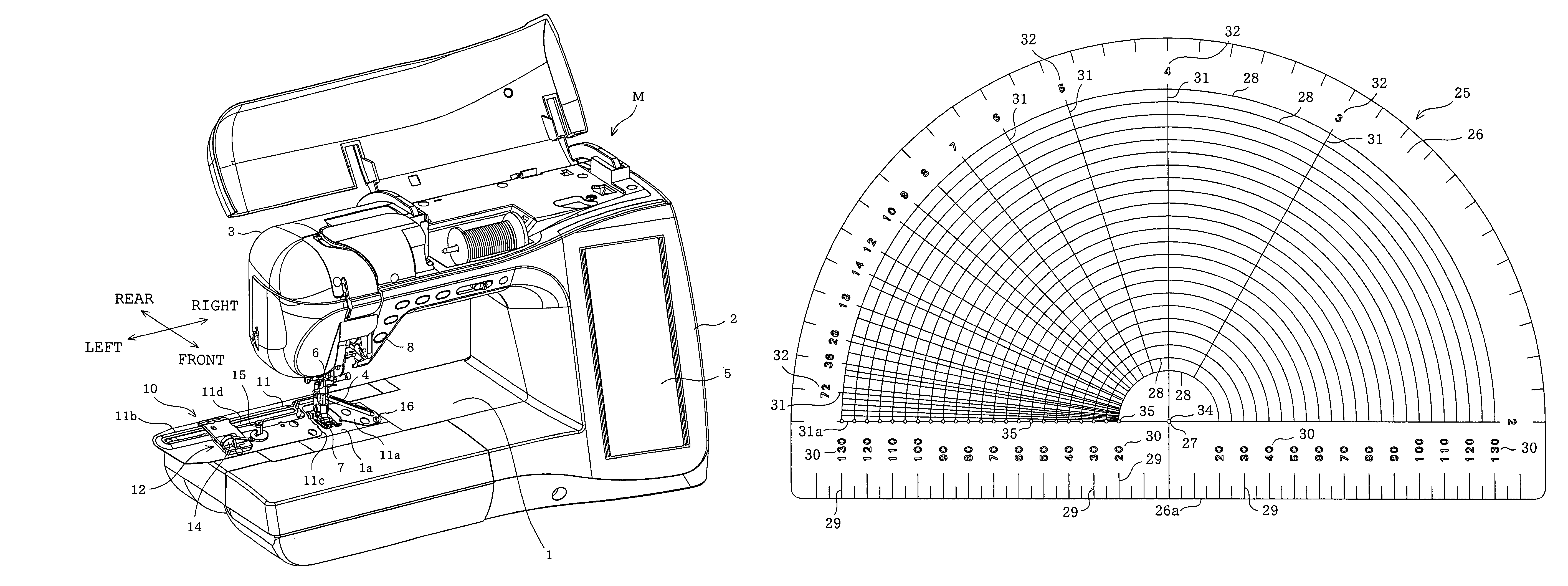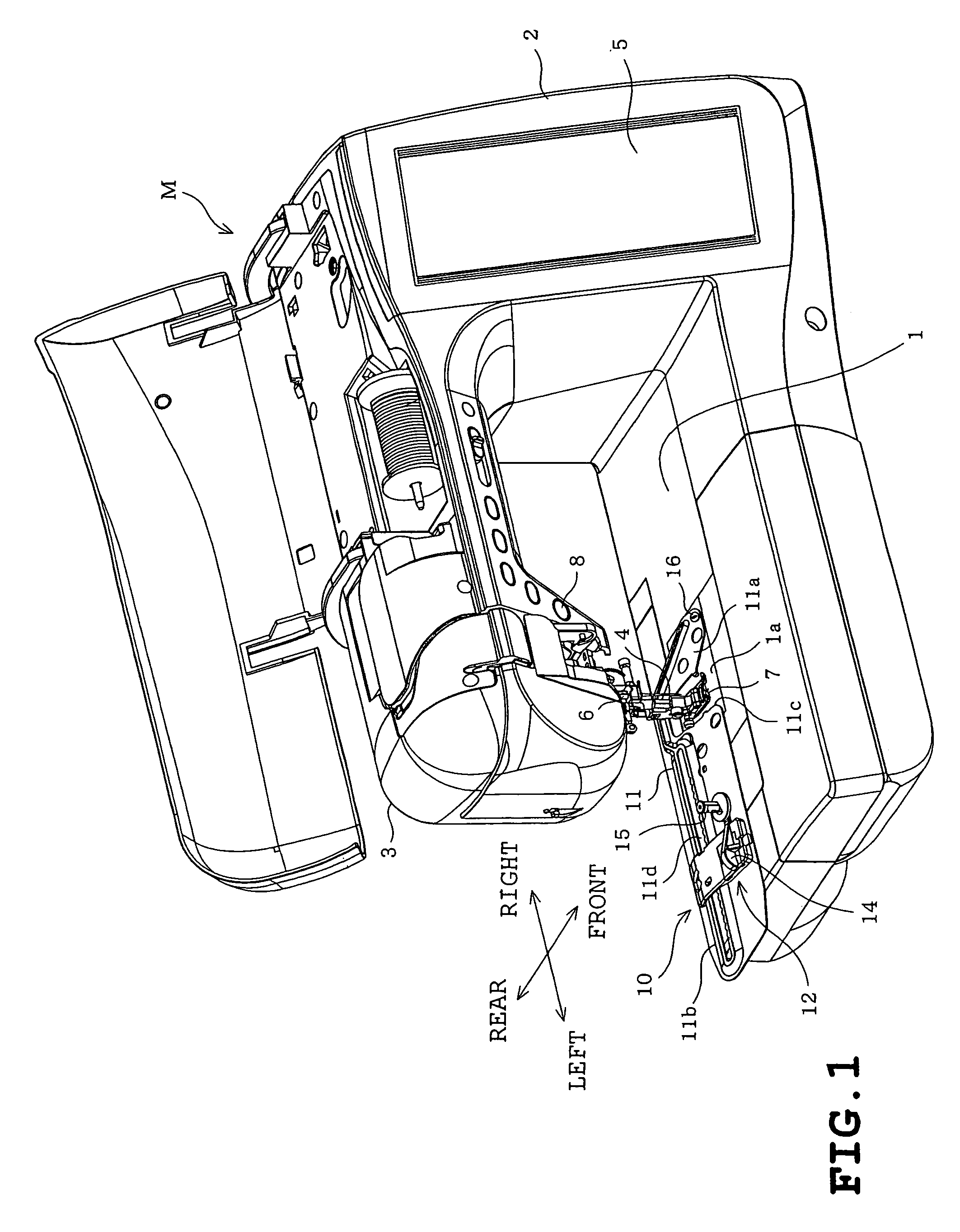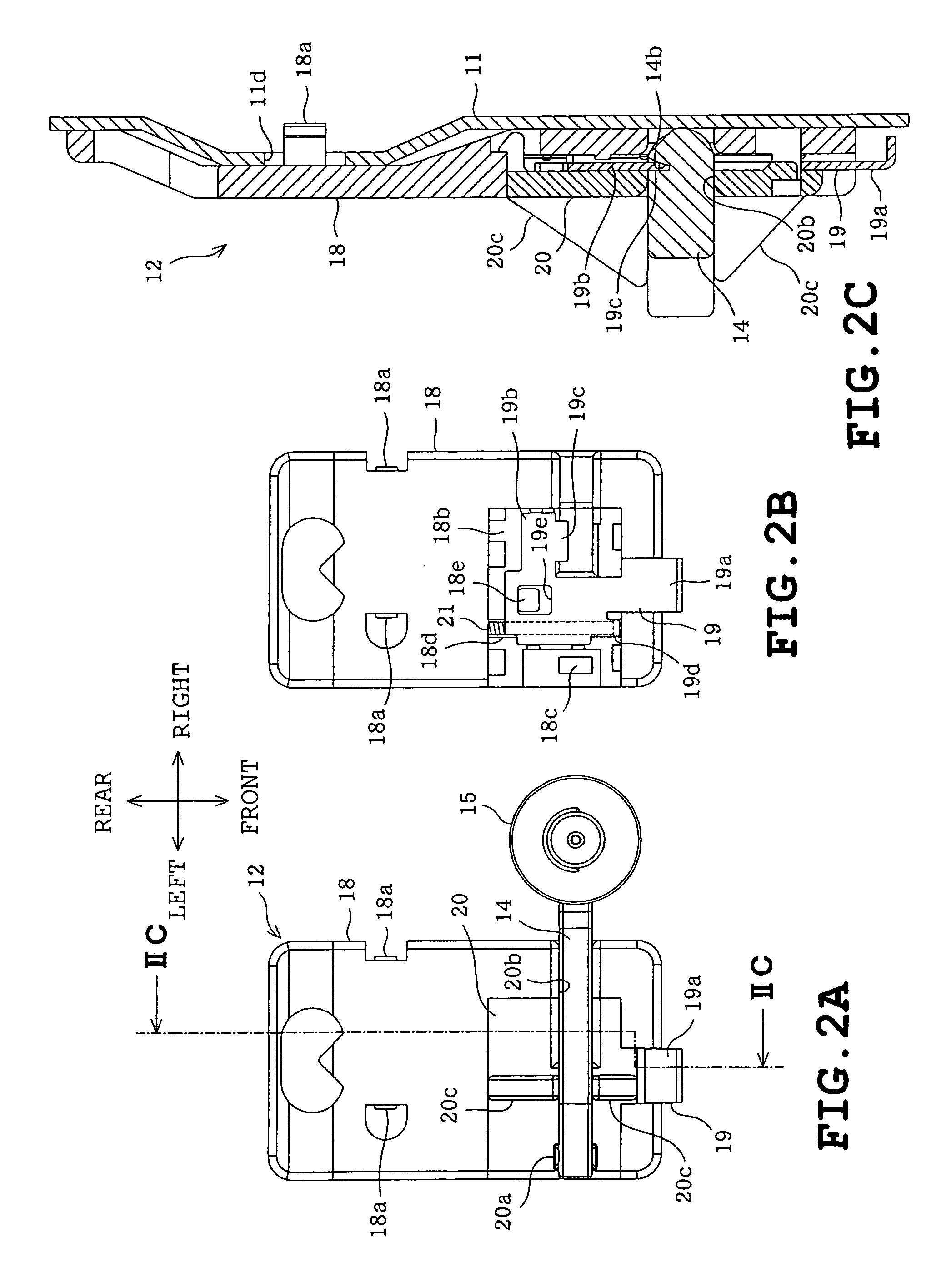Template for use in circular sewing
a technology for circular sewing and templates, applied in the field of templates, can solve the problems of large amount of work, large amount of cloth and thread waste, and unattractive sewing patterns, and achieve the effect of computing functions
- Summary
- Abstract
- Description
- Claims
- Application Information
AI Technical Summary
Benefits of technology
Problems solved by technology
Method used
Image
Examples
Embodiment Construction
[0030]One embodiment will be described with reference to FIGS. 1 to 8D. Referring first to FIG. 1, an electronically controlled sewing machine M is shown. A circular sewing device 10 which will be described later is attached to the sewing machine M. The electronically controlled sewing machine M includes a bed 1, a pillar 2 standing upward from a right end of the bed 1 and an arm 3 extending leftward from an upper end of the pillar 2 so as to be opposed to the bed 1 as shown in FIG. 10. A needle plate 1a is mounted on an upper surface of the bed 1. Below the needle plate 1a are provided a feed dog vertically moving mechanism (not shown) vertically moving a feed dog (not shown) which feeds workpiece cloth to be processed, a feed dog horizontally moving mechanism (not shown) horizontally moving the feed dog, a full rotary hook which accommodates a bobbin (not shown) on which a bobbin thread is wound and forms stitches in cooperation with a needle 4, and a thread cutting mechanism (not...
PUM
 Login to View More
Login to View More Abstract
Description
Claims
Application Information
 Login to View More
Login to View More - R&D
- Intellectual Property
- Life Sciences
- Materials
- Tech Scout
- Unparalleled Data Quality
- Higher Quality Content
- 60% Fewer Hallucinations
Browse by: Latest US Patents, China's latest patents, Technical Efficacy Thesaurus, Application Domain, Technology Topic, Popular Technical Reports.
© 2025 PatSnap. All rights reserved.Legal|Privacy policy|Modern Slavery Act Transparency Statement|Sitemap|About US| Contact US: help@patsnap.com



